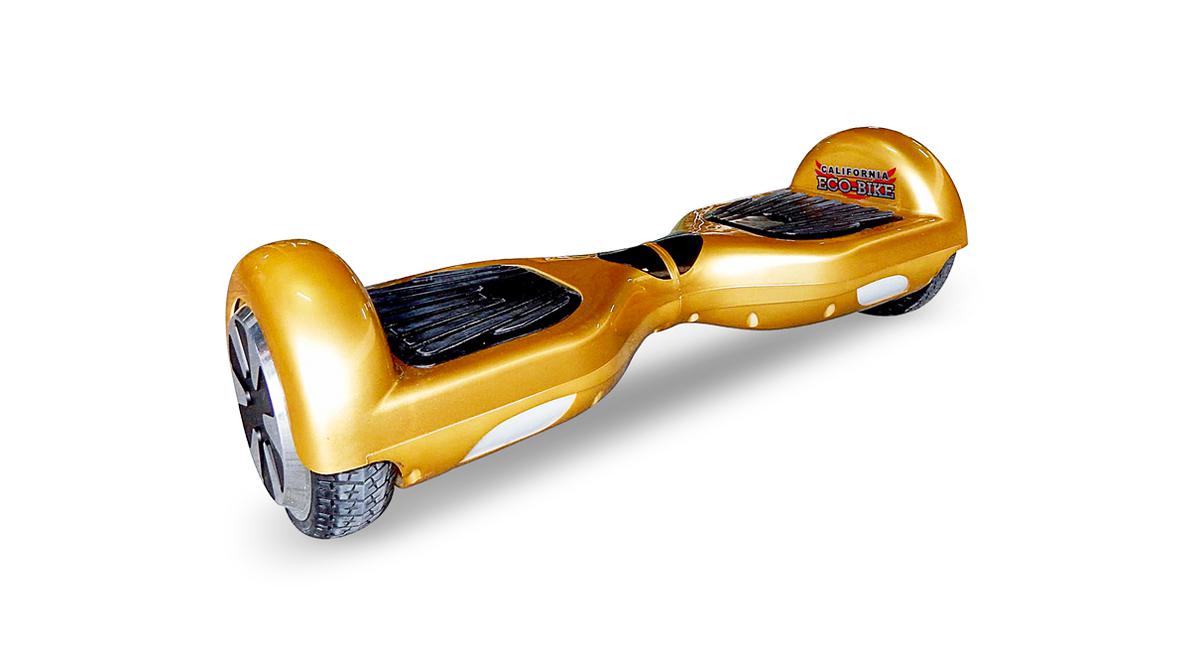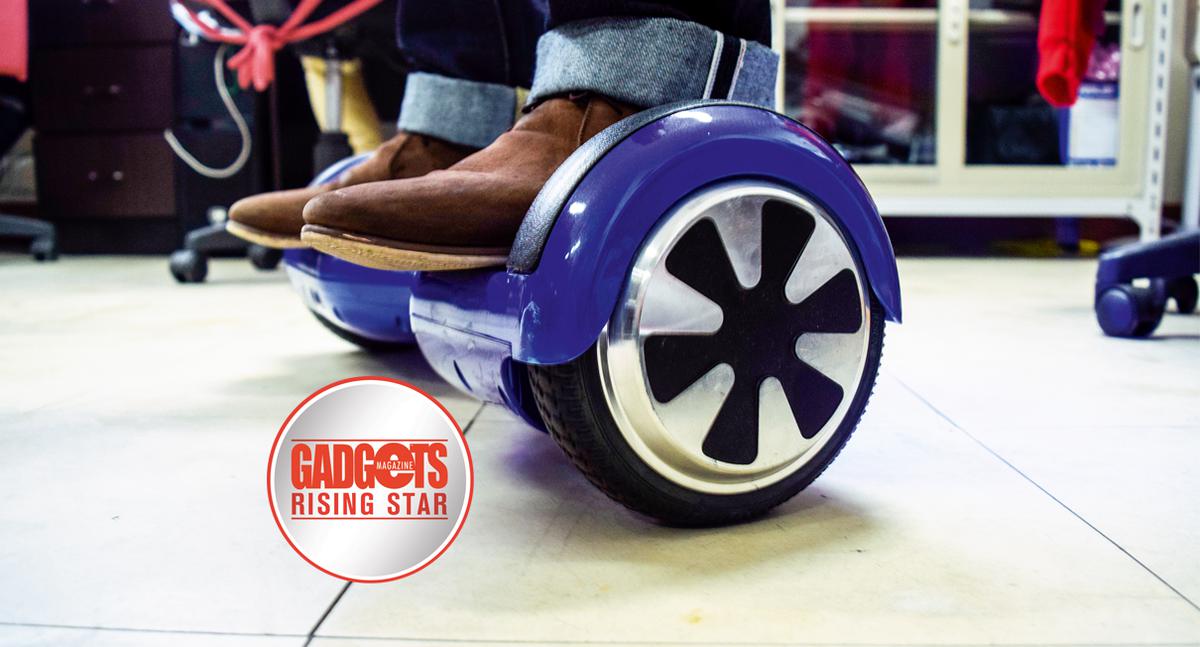What has now come to be called the hoverboard has gained a lot of popularity here and overseas. You can sort of see why. They’re a neat, handy way to make short hops from place to place, and let you do so in the harsh tropical weather without breaking a sweat. As with things that gain popularity the way these things have though, many sub-par examples have flooded the market. We got to review the California Eco Bike entry to the scene, and here’s what we think.

Design: 3.5/5
As with other devices of its kind, the Berkley is a sleek, simple affair. It’s a pair of wheels on either end, and a step board that pivots on a horizontal axis. There is really only one manual control, which is a power button, just beside the charging port on one edge of the board. There are blue signal lights on what is intended to be the back of the unit, though it will work just fine facing either direction. Our Berkley came in a very vibrant shade of blue, which is right up my alley.
Hardware: 4/5
The Berkley runs a 300W motor that allows it to carry a load of up to 100kg. Powering the motor is an internal, non-user-replaceable 36V Li-ion battery with a capacity of 4.4Wh, allowing it to run a maximum of 20Km on a single 90-minute charge. It’s able to move along at a top speed of 10 km/h, and negotiate slopes of up to 15 degrees. For ease of maintenance, it comes with solid, tubeless rubber tires, so you won’t have to worry about flats, or tire pressure, at the expense of some bumps, and some additional weight. It tips the scales at a rather hefty 10kg, so you’re going to want to keep it on the ground, carrying it only when absolutely necessary.
User Experience: 4.5/5
I am a lazy person. I will generally always put off a trip to the grocery, or some other small errand that can be done on foot, until such time as I can take the car. I’m really not a walking kind of guy I guess. So when I got word that I would be reviewing the Berkley, I was understandably excited. It arrived at home in a big box, and the first thing that struck me was the weight. Watching people ride these things, and seeing how agile they are, you’d think they didn’t weigh a thing. Nope. Not many users will be able to lift it, and barely anyone would call the experience comfortable. It’s best to keep it on the ground where it belongs.
There was virtually no setup required, take it out of the box, give it an initial two-hour charge and you’re off.
Using it was even simpler, though an exercise in trust more than balance. Since it has no controls, the user simply hits the power button, stands on the board and lets it do the balancing. Movement is as simple as leaning forward, leaning backwards, or pushing one side of the board down to spin in that direction. I was on the board and moving around the office literally the first time I got on, which shows it is entirely possible to get that done. This being said, once I brought it to a friend’s house for people to give it a try, we found that perhaps two-thirds of them needed at least a few minutes to get comfortable with the Berkley. Most of them did get it eventually, though some remain apprehensive about using it in the real world.
Taking their (and my) experience on the device with me, I headed over to BGC, where everything is an odd distance away—both too far to walk comfortably, and too close to drive. This is the kind of environment a machine like this was built for. Humming about on two wheels, being able to avoid obstacles, traffic, and the heat are all very easy. It’s really very agile, and once you’re comfortable and know just where the wheels fall, you might as well be on your own two feet. It’s quiet, and you will have to warn people of your approach so they don’t get startled as you pass. I was able to use it enough that I had hit the point where I wasn’t even thinking about it anymore.
It’s not without a few problems though. Since the wheels are a little on the cute side, you have to be mindful of gaps and small edges on the street. If you try to navigate them slowly, you will get thrown off, so it’s a good idea to go through them fluidly, without slowing down. Should you have to bail, as I did on more than one occasion, you can simply walk off, as one would a walkalator at the airport.
Battery life is as advertised, and it gave me more than a week of going around a few kilometers daily. If you plug it in at every opportunity, you should be able to keep using it without having to worry about the battery running flat. Just keep it topped up like you would your car. It can carry all of my 150 pounds, plus a bag with groceries, with no problem. More load will, however, shorten your range, as will inclines, and going fast.
Value: 3.5/5
At a shade under PHP 10,000, it still marks a significant investment on your part. If, however, you frequently make short hops to and from places, it’s more than worth the hassle you save yourself. It’s a lot of fun, just make sure you actually use it, or buyer’s regret may follow.
What’s Hot:
- Convenient
- Low-maintenance
- Fun
What’s Not:
- Not everyone can take to it easily
- Has some trouble with bumps on
- Heavy
Bottomline:
More than just a novelty, it’s an actual way to get around.
Specification:
- Rated Power: 300W
- Rated Voltage: 36v (36v 4.4ah Li-on)
- Battery Type: Lithium-ion
- Charging Tine: 901-120 Minutes
- Max Climbing: 15 degree
- Load Capacity: 100 kg
- Speed: Up to 10Km/h
- Riding Distance up to 15-20Km
- Tire: Tubeless Tire
- Motor Type: Brush DC Motor
- Gross Weight: 10Kg
Also published in GADGETS MAGAZINE June 2016 Issue.
Words by Ren Alcantara
